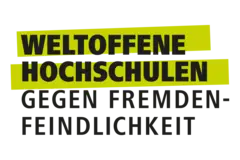How can dairies actively shape the energy transition and reduce their greenhouse gas emissions? This is what Technische Hochschule Ingolstadt (THI) investigated in cooperation with partners from the dairy industry in the BlueMilk research project, which was successfully completed and funded by the Federal Ministry of Agriculture for four years. The THI scientists worked together with experts from Zott SE & Co. KG, Andechser Molkerei Scheitz GmbH and AGO GmbH Energie + Anlagen und Lemmermeyer GmbH & Co.KG. The results were recently presented at a digital final conference.
The German government has set itself the goal of covering 80 percent of gross electricity consumption from renewable energies (RE) by 2030 in order to achieve the overarching goal of net greenhouse gas neutrality by 2045. This requires a huge expansion of photovoltaic and wind power plants, which, however, also means volatile power generation and demands flexibility from consumers such as controllable power generators. Dairy companies could meet this demand with flexible energy concepts. During the event, Prof. Dr.-Ing. Uwe Holzhammer made clear how flexibility will be needed in the future, both individually and in interaction, in order to be able to react to electricity generation from wind and photovoltaics that can be planned to a certain extent. "Only in this way will it be possible to use the high future RE electricity volumes cost-efficiently. Flexibility is not a burden. It offers companies the opportunity to stabilise energy costs," says Prof. Holzhammer.
Cleaner electricity is also cheaper
The approach is to use the fluctuations in electricity exchange prices to the company's advantage. The research project concluded that this approach saves emissions at the same time. If the share of RE in the public electricity grid is high, emissions are consequently also low. The clean electricity is therefore also the cheap electricity.
Against this background, Volker Selleneit, research assistant at THI, investigated different energy supply concepts for dairies, which can provide this flexibility with combined heat and power plants (CHP) and the sector coupling approach (heat is generated from electricity). Both the energy supply costs for dairies and the operational emissions are to be reduced in this way. To achieve this, it is necessary to plan the use of the energy conversion plants intelligently and strategically with a view to 2030. This optimisation was simulated in models, taking fluctuating electricity exchange prices into account, and compared with the existing concept of an in-house power supply through a combined heat and power plant - a common design in recent years.
The results for the years 2020 to 2022 showed large differences. In 2020, the energy supply costs for flexible concepts were significantly higher than the previous concept of CHP self-supply. For 2021 and 2022, however, the cost situation turns around. Selleneit concludes from this that flexible concepts are generally not sensible from a purely economic point of view when prices are relatively favourable and fluctuate little and the legal framework conditions are rigid, as in 2020. However, if the volatility of prices increases, taking into account the less rigid legal framework conditions that now apply, as in 2021 and 2022, flexible concepts may represent a more cost-resilient alternative.
The THI team of scientists around Prof. Holzhammer expects a development towards relevantly more volatility in the electricity supply and thus in the electricity price in the future. At the same time, however, increasing the flexibility of the processes - generation and demand - can reduce the economic risks in years with extreme prices and price fluctuations such as 2022.
Greenhouse gas emissions can be reduced
What stood out particularly positively was that the greenhouse gas emissions of the farm can be reduced in any case with the flexible concepts. In conjunction with adapted heat utilisation concepts, which Selleneit also sees as necessary, even further increases in efficiency and greenhouse gas reductions are possible.
Martin Stöckl, research associate at THI, dealt with the special flexibility option of cooling systems in dairies. "If the RE share in the public electricity grid is high, the temperature in the cold store is lowered. In return, the cooling capacity is reduced when the RE share is low. The products themselves store the necessary cold and only move within a predefined temperature range to ensure continued high quality," Martin Stöckl describes the idea succinctly. This means that the temperature in the cold store is normally around five degrees Celsius. But if the sun shines during the day, cooling can be increased. The cold stored in the products can then be used at night and the system can be switched off.
Great savings potential through smart temperature control
Model studies show that CO2 emissions can be reduced in this way and costs can also be cut. If it is possible to lower the temperatures of the products before transport further than is currently the case by using renewable energy, costs, resource consumption and emissions can also be relevantly reduced in the logistics chain. The scientists see great potential here to reduce CO2 emissions and at the same time improve the economic competitiveness of companies.
Prof. Holzhammer summarised that dairies can contribute to reducing emissions by increasing flexibility and efficiency and thus become an active part of the energy transition. Through BlueMilk, the potentials were shown and presented to the industry. The next step is the operational implementation, where there are still hurdles to overcome. In Prof. Holzhammer's view, the implementation should be scientifically flanked and accompanied in order not to lose any time and to make the industries fit for large shares of renewable energies as quickly as possible.
The BlueMilk research project was funded by the Federal Ministry of Food and Agriculture (BMEL). The project was carried out by the Federal Agency for Agriculture and Food (BLE) as part of the programme to promote innovation.
The Energy Systems Technology department at the Institute for New Energy Systems (InES) at Ingolstadt University of Applied Sciences deals with issues relating to the integration of renewable energies.

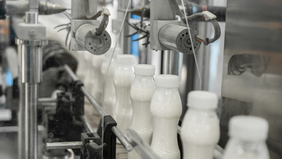
![[Translate to English:] Logo Akkreditierungsrat: Systemakkreditiert](/fileadmin/_processed_/2/8/csm_AR-Siegel_Systemakkreditierung_bc4ea3377d.webp)





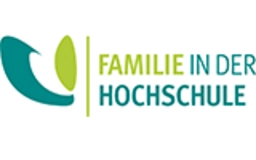
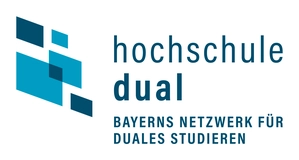
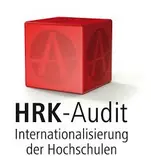
![[Translate to English:] Logo IHK Ausbildungsbetrieb 2023](/fileadmin/_processed_/6/0/csm_IHK_Ausbildungsbetrieb_digital_2023_6850f47537.webp)


